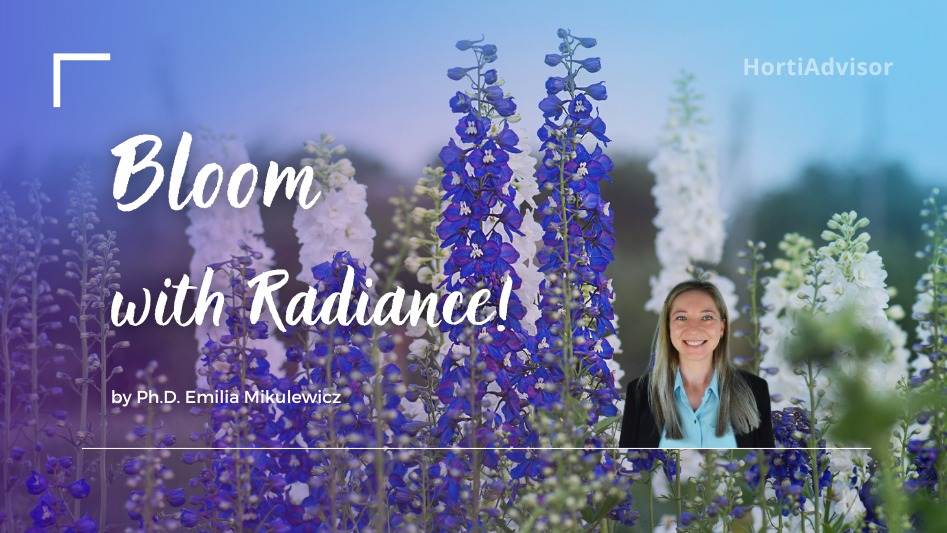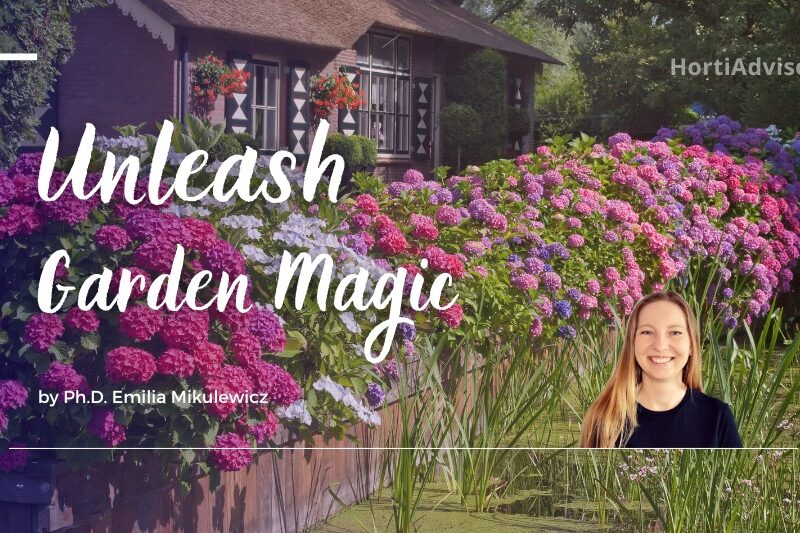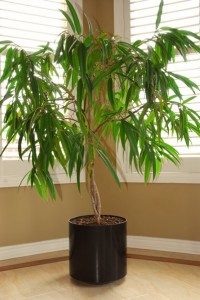Introduction
About Candle Larkspur
The Candle Larkspur (Delphinium elatum) is a perennial flower that is prized for its majestic height and vibrant flower heads, displaying a remarkable mix of colors ranging from purple and blue to white. This stately plant hails from the cool mountainous regions of Europe and brings an aura of grandeur and elegance to your garden.
Benefits of Growing Candle Larkspur
Delphinium elatum isn’t just an aesthetic addition to your garden but serves as a beneficial component in terms of plant growth and overall biodiversity. It provides an extended blooming season due to its high tolerance for cooler climates, while also attracting pollinators to enhance your garden’s biodiversity.
Candle Larkspur’s Importance in Horticulture
Owing to its aesthetic appeal and simplicity of care, Candle Larkspur has earned a revered spot in the realm of horticulture. It contributes an architectural dimension to gardens, making it a favorite among designers, and its long-lasting flower heads make it a preferred choice for florists.
Common Misconceptions About Candle Larkspur
Despite its popularity, several misconceptions surround the Candle Larkspur. One common misconception is the supposed difficulty associated with its growth. In reality, with proper care and moist soil, Delphinium elatum can thrive and adorn your garden for many years.
Overview of this Candle Larkspur Guide
This comprehensive guide will journey through the life of Candle Larkspur, covering everything from its scientific classification to best practices for planting and care. We’ll debunk common misconceptions and provide useful tips for tackling any challenges you might face.
Candle Larkspur: Background Information
Scientific Classification and Name of Candle Larkspur
Candle Larkspur is the common name for Delphinium elatum, a species in the Ranunculaceae family. The genus name ‘Delphinium‘ originates from the Greek word ‘delphis’, meaning dolphin, referring to the shape of the unopened flower buds.
Origin and Distribution of Candle Larkspur
Candle Larkspur is native to the mountainous regions of Europe and Western Asia. The plant has since been cultivated worldwide, especially in temperate areas, due to its beautiful blooms and impressive height.
Characteristics of Candle Larkspur
Size
Candle Larkspur plants typically reach a height of 4 to 6 feet, making them a striking presence in the garden.
Foliage
Its deeply lobed leaves sport a dark green shade, beautifully contrasting the vibrant blooms.
Flowers
Candle Larkspur produces clusters of brightly colored flowers in shades of blue, purple, or white. Each flower has a unique, spurred shape, which adds to its distinctiveness.
Growth Habits
Naturally adopting a vertical growth pattern, the Candle Larkspur boasts tall, bloom-laden stalks. Its vibrant hues are unveiled from early to late summer, ensuring a prolonged blooming season that can significantly enhance the visual appeal of any garden.
Quick Facts About Candle Larkspur Characteristics
The Candle Larkspur is a perennial plant, recognized for its spire-like growth and vibrant, uniquely shaped flowers. Despite its delicate look, it shows impressive resilience, especially in cooler climates, demonstrating full sun tolerance and a remarkable ability to thrive in moist soil conditions.
| Common names | Candle larkspur, Bee larkspur, King Arthur |
|---|---|
| Botanical name | Delphinium elatum |
| Family | Ranunculaceae |
| Type | Perennial |
| Native area | Europe and Asia |
| Hardiness zone | 3 – 7 (-40°C to -17°C) |
| Height | 120 cm – 180 cm (48″ – 72″) |
| Spread | 60 cm – 75 cm (24″ – 30″) |
| Spacing | 30 cm – 60 cm (12″ – 24″) |
| Light preference | Full sun to partial shade |
| Water preference | Moist, well-draining soil |
| Maintenance | Moderate |
| Soil type | Loamy, sandy or clay soil |
| Soil pH | Neutral to slightly acidic (pH 6.5 – 7.5) |
| Soil drainage | Well-drained soil |
| Garden uses | Excellent for borders, cottage gardens, and cutting gardens |
| Garden styles | English, cottage, and traditional gardens |
| Companion plants | Lupines (Lupinus), Irises (Iris), Peonies (Paeonia), Roses (Rosa), and Phlox (Phlox) |
Popular Varieties and Cultivars of Candle Larkspur
There are many cultivars of Candle Larkspur, bred for different flower colors, plant heights, and bloom times. Some popular ones include ‘Blue Lace’, known for its sky-blue flowers, and ‘Dasante Blue’, prized for its compact growth and deep blue flowers.
History and Cultural Significance of Candle Larkspur
The Candle Larkspur is known for its beautiful appearance and impressive size. According to European folklore, it was believed to have protective qualities against scorpions. In modern times, it’s a popular choice in floral arrangements, particularly for weddings and other special events, due to its symbolic association with an open heart and ardent attachment.
Planting and Propagation of Candle Larkspur
Sourcing and Selecting Healthy Candle Larkspur Plants or Seeds
When it comes to Candle Larkspur, selecting a reputable source is critical. Look for providers that offer high-quality, disease-free seeds or plants. Young seedlings should have a vibrant green hue without signs of wilting or discoloration. As for seeds, they should be plump and free of any visible damage or mold.
Choosing the Right Location for Candle Larkspur: Factors to Consider
Sunlight Requirements
Candle Larkspur thrives in full sun, needing at least six hours of direct sunlight each day. Ensure your chosen site is kept from larger plants or structures.
Soil Preferences
Candle Larkspur prefers fertile, well-drained soil with a neutral to slightly alkaline pH. To improve soil fertility, consider adding compost or well-decomposed organic fertilizer.
Drainage and Water Requirements
Ensure your site has excellent drainage, as Candle Larkspur dislikes “wet feet”. While it enjoys regular watering, avoid waterlogging. Overly saturated soils can lead to root rot.
Space Requirements and Layout
These tall, vertical plants need enough space to flourish. Plant Candle Larkspur about 1 to 2 feet apart to allow ample air circulation and reduce the risk of disease.
Planting Season and Timing for Candle Larkspur
Candle Larkspur can be planted in spring or early fall. Sowing in late winter or early spring is usually the most successful for seeds.
Propagation Methods for Candle Larkspur
Seeds
Sowing seeds directly into the garden is the most common propagation method. They can also be started indoors in late winter to get a jump start on the growing season.
Division
If you want to propagate Candle Larkspur, it’s best to divide mature plants during their dormant period, either in early spring or late fall.
Preparing the Planting Site for Candle Larkspur
Soil Preparation
Before planting, remove any weeds and work some compost or well-rotted manure into the top few inches of soil to boost fertility.
Spacing and Planting Depth
Plant seeds or seedlings 1 to 2 feet apart. When planting seeds, make sure to sow them at a depth of approximately 1/8 inch.
Watering and Initial Care
After planting, water the area thoroughly and continue to provide regular water, particularly during dry spells. Seedlings may require a stake for support as they grow.
Growth and Maintenance of Candle Larkspur
Watering and Irrigation for Candle Larkspur
Consistent watering helps Candle Larkspur plants establish deep root systems. Water the plants deeply and less frequently to promote healthy growth. Moist, but not waterlogged soil, ensures optimal development.
Fertilization and Soil Amendments for Candle Larkspur
Delphinium elatum thrives in nutrient-rich soil. Application of well-rotted manure or compost yearly helps maintain soil fertility. Consider applying a slow-release, balanced fertilizer in early spring to boost growth.
Pruning and Shaping Candle Larkspur
Pruning is essential for maintaining the plant’s shape and encouraging prolific blooming. Remove spent blooms to encourage a second flush of flowers, and prune back in late fall after the plant goes dormant.
Mulching and Weed Control for Candle Larkspur
Mulch around the base of the plant aids in weed control and moisture retention. It also helps protect the plant’s shallow roots from temperature fluctuations.
Companion Planting and Intercropping with Candle Larkspur
Companion plants that work well with Candle Larkspur include roses, irises, and salvia, which offer color contrast and share similar growing conditions.
Pest and Disease Control for Candle Larkspur
Common Pests
Candle Larkspur can occasionally be affected by aphids, slugs, and snails. Inspect plants regularly to catch infestations early.
Common Diseases
Fungal diseases such as powdery mildew and rust can be an issue, particularly in damp conditions or in areas with poor air circulation.
Integrated Pest Management Strategies
Integrated Pest Management (IPM) emphasizes healthy growth as the best defense against pests and disease. It includes regular monitoring, choosing resistant varieties, and introducing beneficial insects that naturally control pest populations.
Seasonal Care and Considerations for Candle Larkspur
Winter Protection
In colder regions, apply a thick layer of mulch in late fall to protect the roots from freezing temperatures.
Handling Heat and Drought Stress
In hot and dry climates, increase watering and consider adding a layer of mulch to help conserve moisture.
Monitoring Candle Larkspur’s Health and Growth
Regular observation is vital. Monitor growth, check for signs of pests or disease, and ensure plants are receiving the necessary nutrients and care.
Uses and Applications of Candle Larkspur
Medicinal Uses of Candle Larkspur
Candle Larkspur has a long history of use in traditional medicine. Rich in antioxidants, it has been used to promote skin health and overall well-being.
Ornamental and Landscaping Purposes of Candle Larkspur
Candle Larkspur adds interest to any landscape with its upright growth habit, striking colors, and bountiful blooms. It is a favorite among gardeners for borders, cottage gardens, and cutting gardens.
Conservation and Sustainability Considerations for Candle Larkspur
Candle Larkspur is often used in conservation planting. Its ability to attract pollinators makes it an excellent choice for biodiversity gardens.
Troubleshooting and Common Problems with Candle Larkspur
Addressing Nutrient Deficiencies in Candle Larkspur
To maintain the health and vibrancy of your Candle Larkspur, nutrient supplementation is key. A balanced organic fertilizer can fulfill its nutrient requirements and ensure it continues to thrive.
Managing Environmental Stressors for Candle Larkspur
Environmental stressors, such as extreme temperatures, too much or too little water, and high winds, can impact Candle Larkspur’s health. Regular monitoring, adequate watering, and providing shelter from extreme weather conditions can alleviate these issues.
Diagnosing and Treating Common Physiological Disorders
Common physiological disorders include fungal infections and root rot, often due to overly wet conditions. Improving drainage, reducing watering, and applying appropriate fungicides can help in these cases.
Solutions to Common Issues with Candle Larkspur
From pests to diseases, it’s crucial to catch any problems early. Integrated pest management and regular plant health checks can prevent and address most issues.
Summary: Candle Larkspur Key Takeaways
Critical Points for Successfully Planting, Growing, and Caring for Candle Larkspur
Candle Larkspur is a plant of exceptional beauty and versatility. To ensure its successful growth and development, provide it with plenty of sunlight, well-drained soil, and regular watering. Regular pruning can enhance its visual appeal while using organic mulch can prevent weed infestation. Also, monitor its health regularly to detect any potential disease or pest infestation.
Common Mistakes to Avoid When Growing Candle Larkspur
Growing Candle Larkspur is a rewarding experience, but common mistakes can hinder its growth. Overwatering, planting in poorly drained soil, and excessive use of chemical fertilizers can harm the plant. Regular monitoring of its health can mitigate these issues and ensure a healthy growth cycle.
Encouragement for Cultivation Candle Larkspur
Cultivating Candle Larkspur can bring immense joy and aesthetic value to your garden. Its vibrant blooms will enrich your outdoor space, and its ability to attract pollinators will contribute to the local ecosystem. So why wait? Start your Candle Larkspur cultivation journey today and contribute to the beautification of our world.


